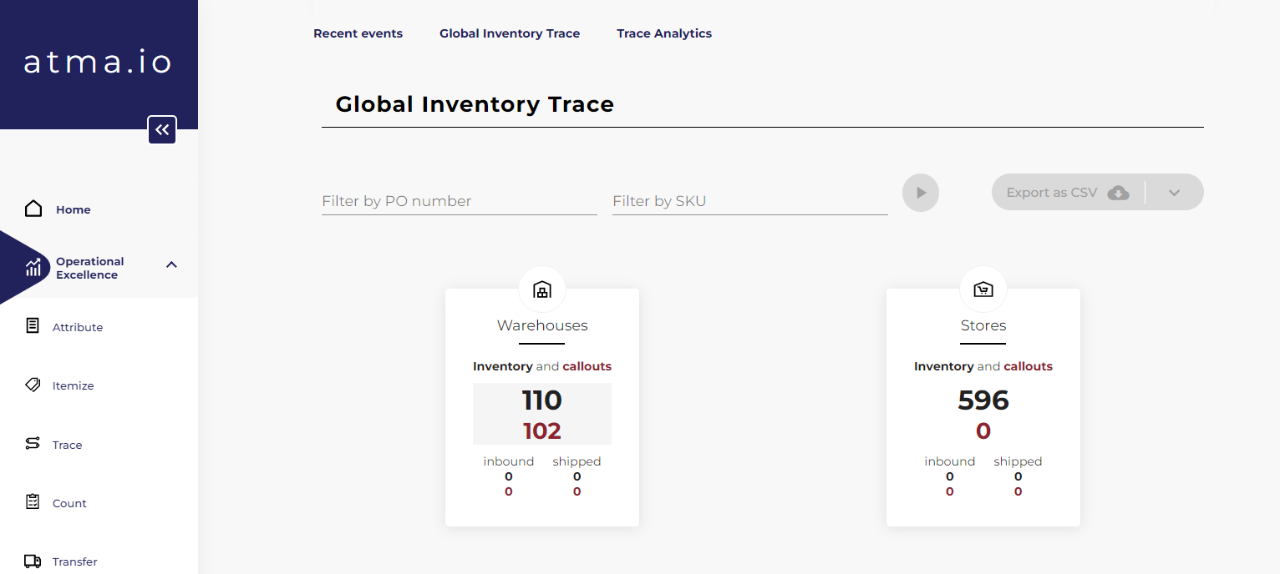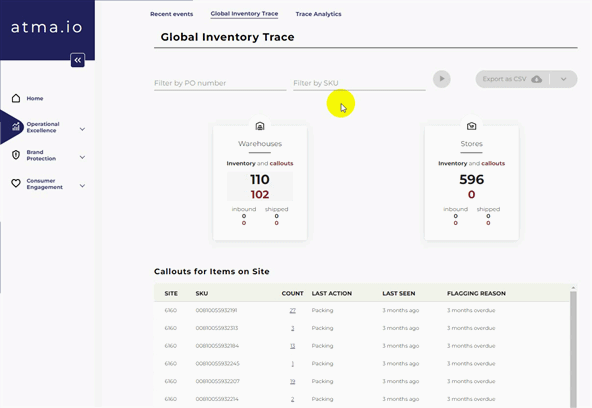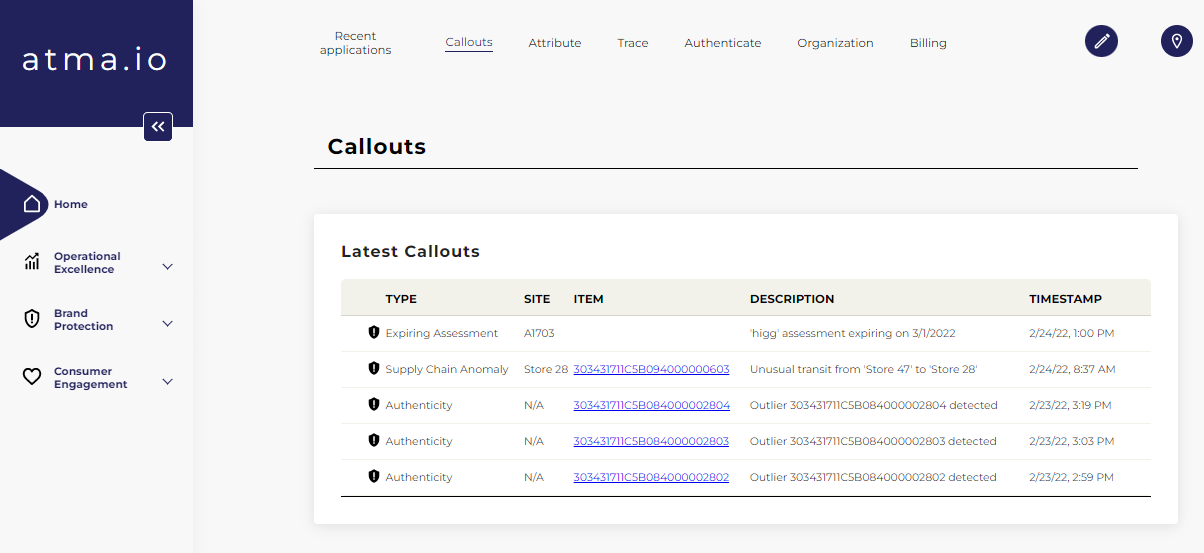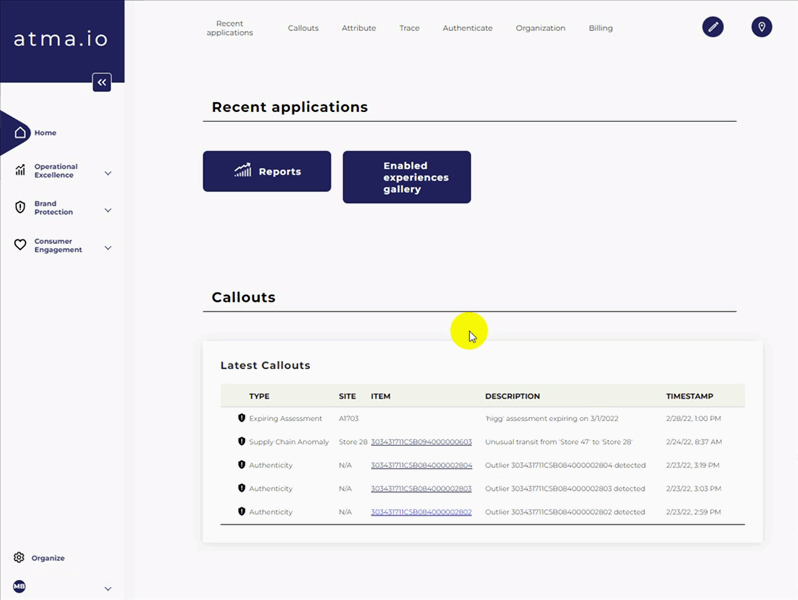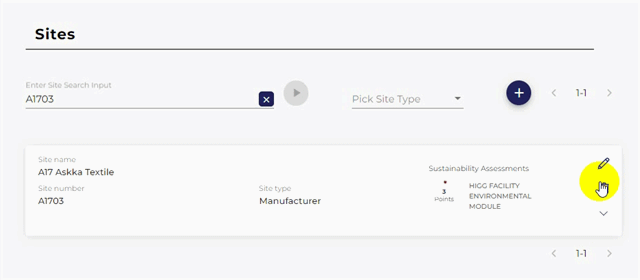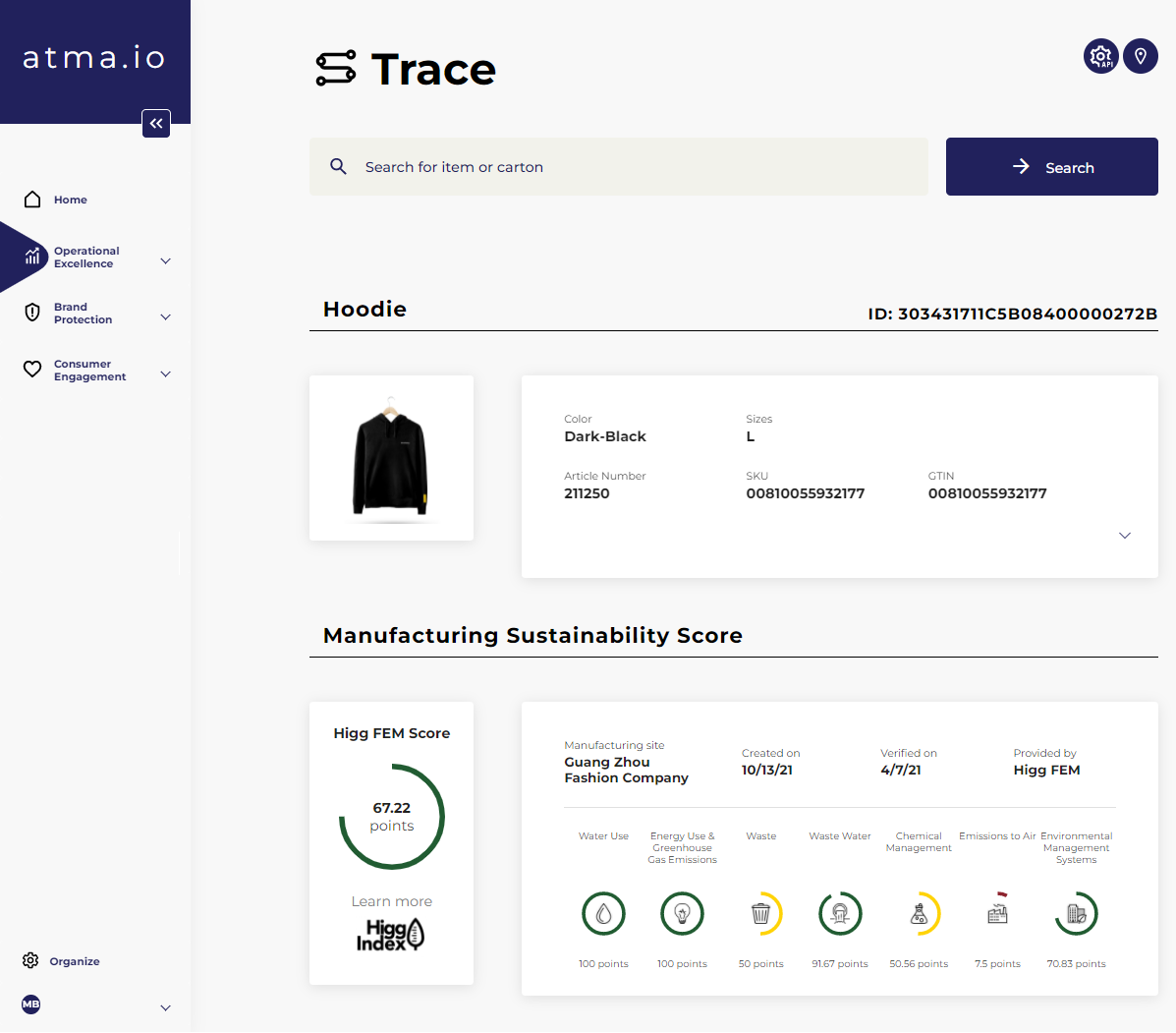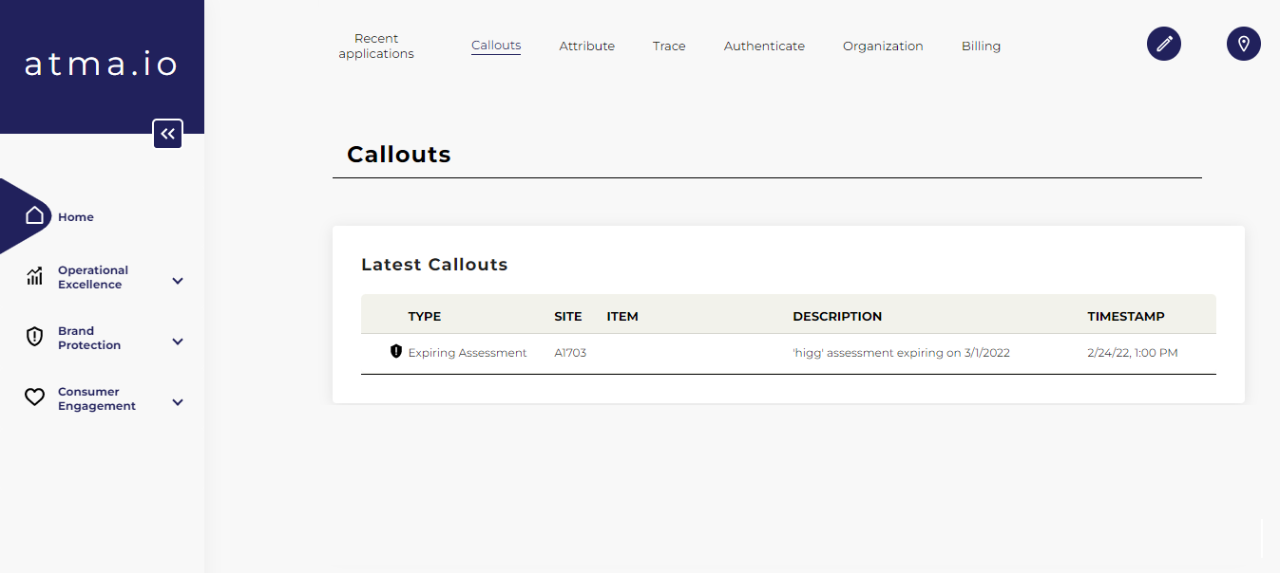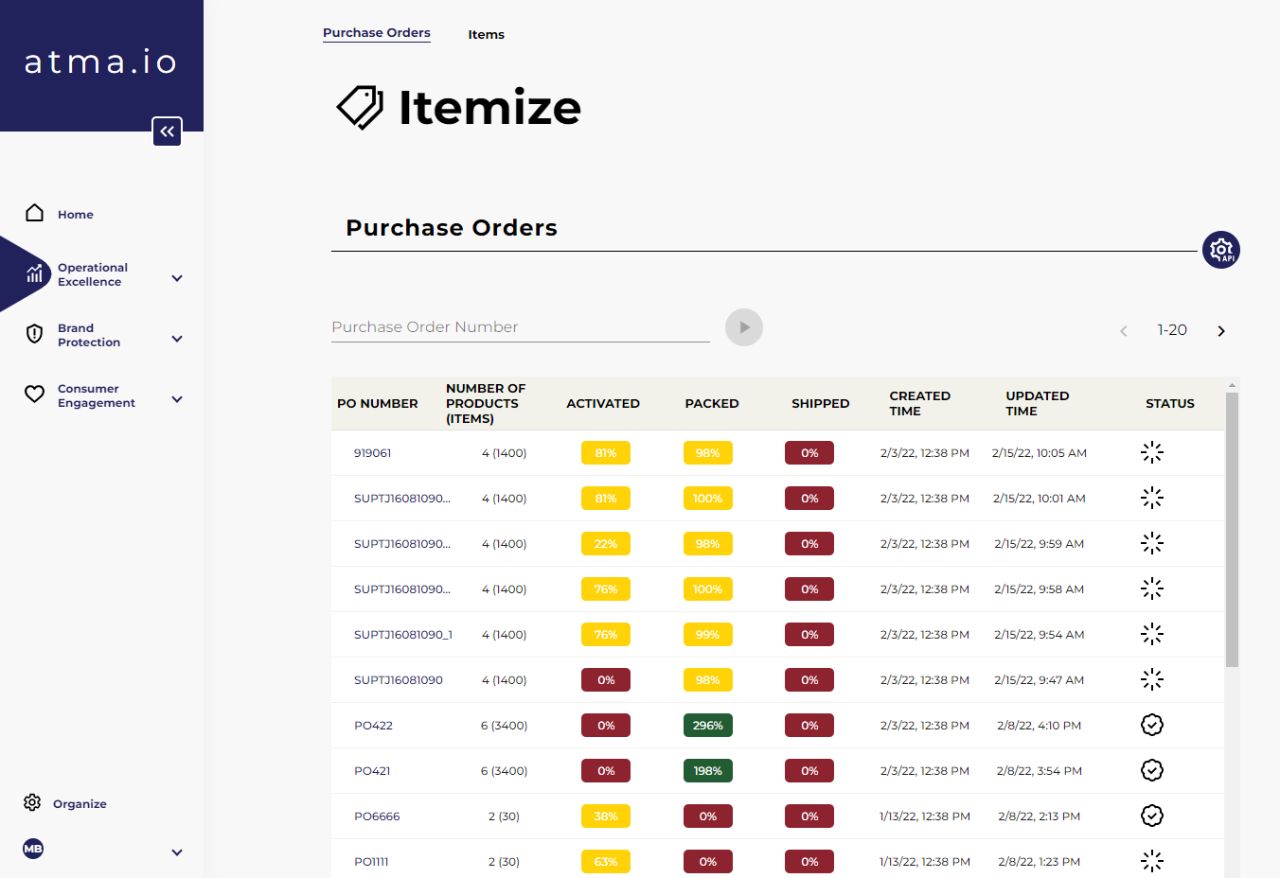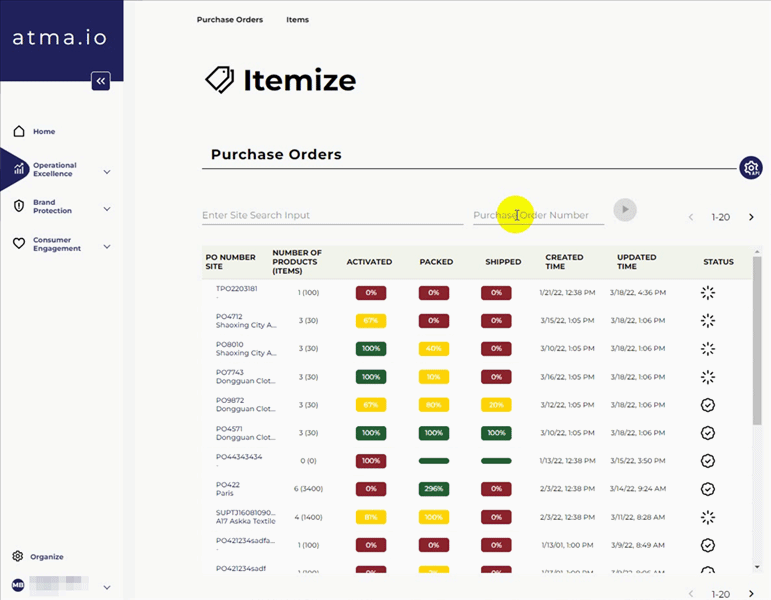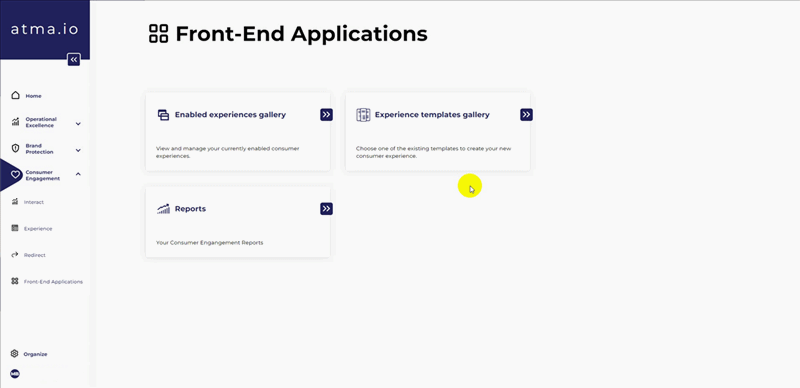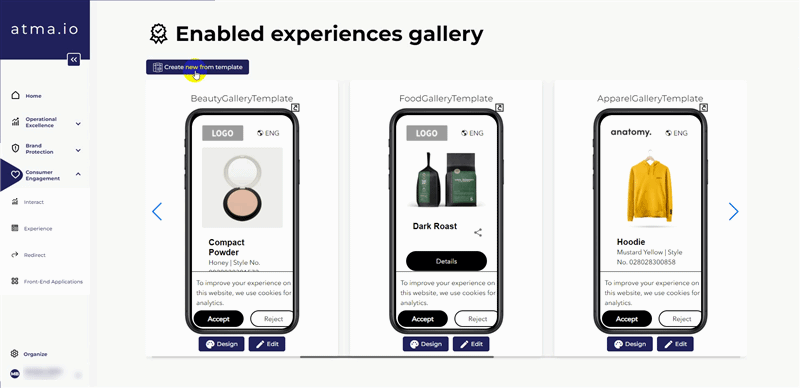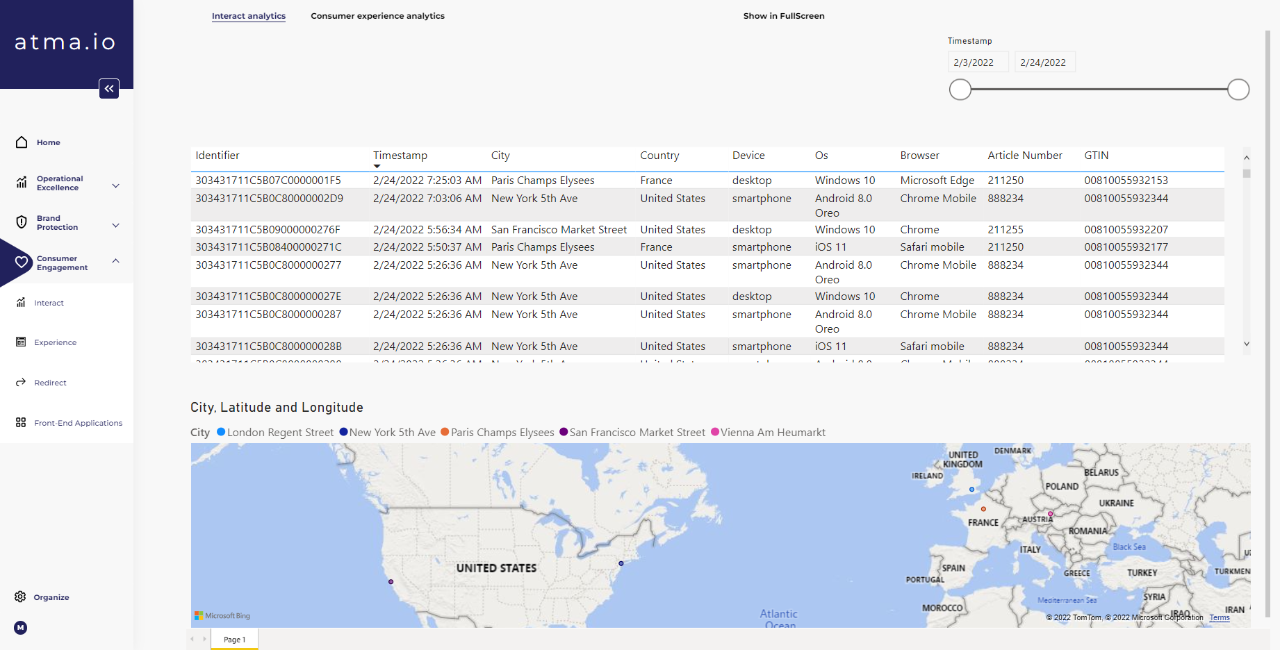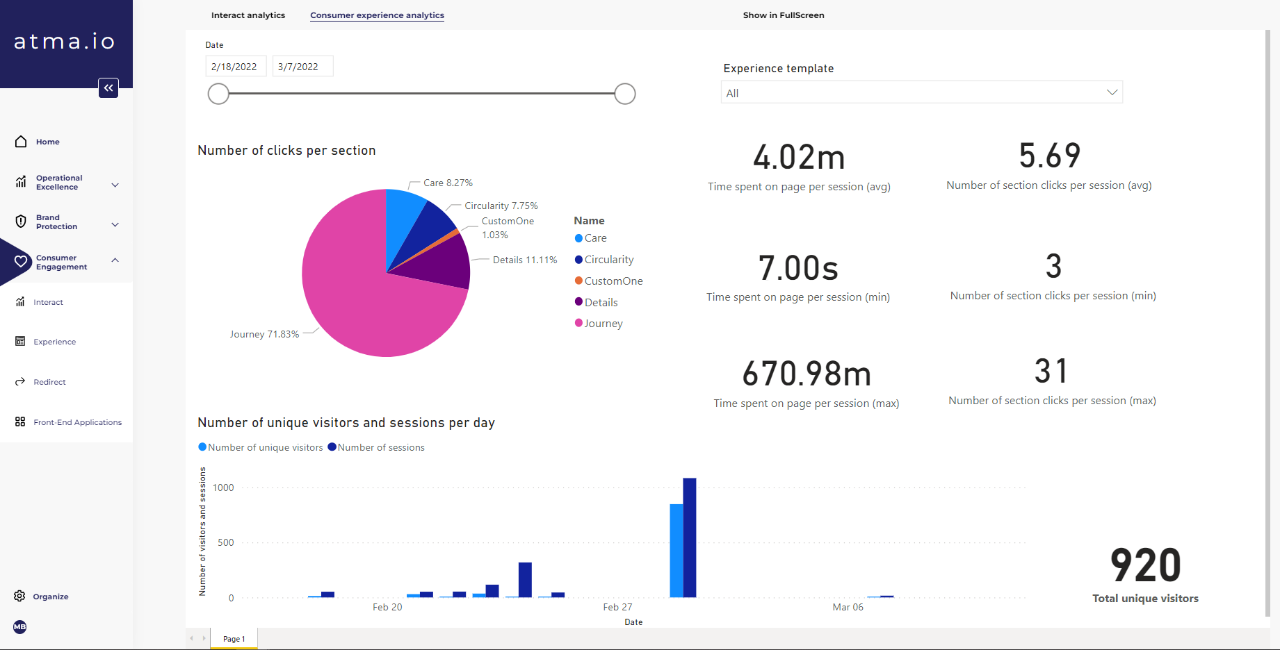What's new?
Global Inventory Trace, introduced to track inventory at SKU and Purchase Order Level along the supply chain. This gives you precise information on how your inventory is distributed across the entire supply chain, broken down by type of location (e.g. factories, warehouses, stores). In addition, we now create Callouts* for items which are located at a particular site for longer than expected and for items that might be close to perishing or are likely to miss their next delivery destination.
*Callouts are alerts/warnings to indicate that some items might need your attention.
Problem solved / use cases?
It is a burning need of producers and retailers to know how their inventory is dispersed across the supply chain, as well as having the ability to track purchase orders from site to site, in order to get a handle on delays and perished stock. Having actionable insights with answers to these questions can significantly help you with stock optimization and waste/cost reduction.
How does it work?
atma.io Hub has one ‘card’ for each site type (e.g. factories, warehouses, stores) that shows the number of items located at the corresponding site type, number of callouts per site, and the number of items in transit to and from that site.

